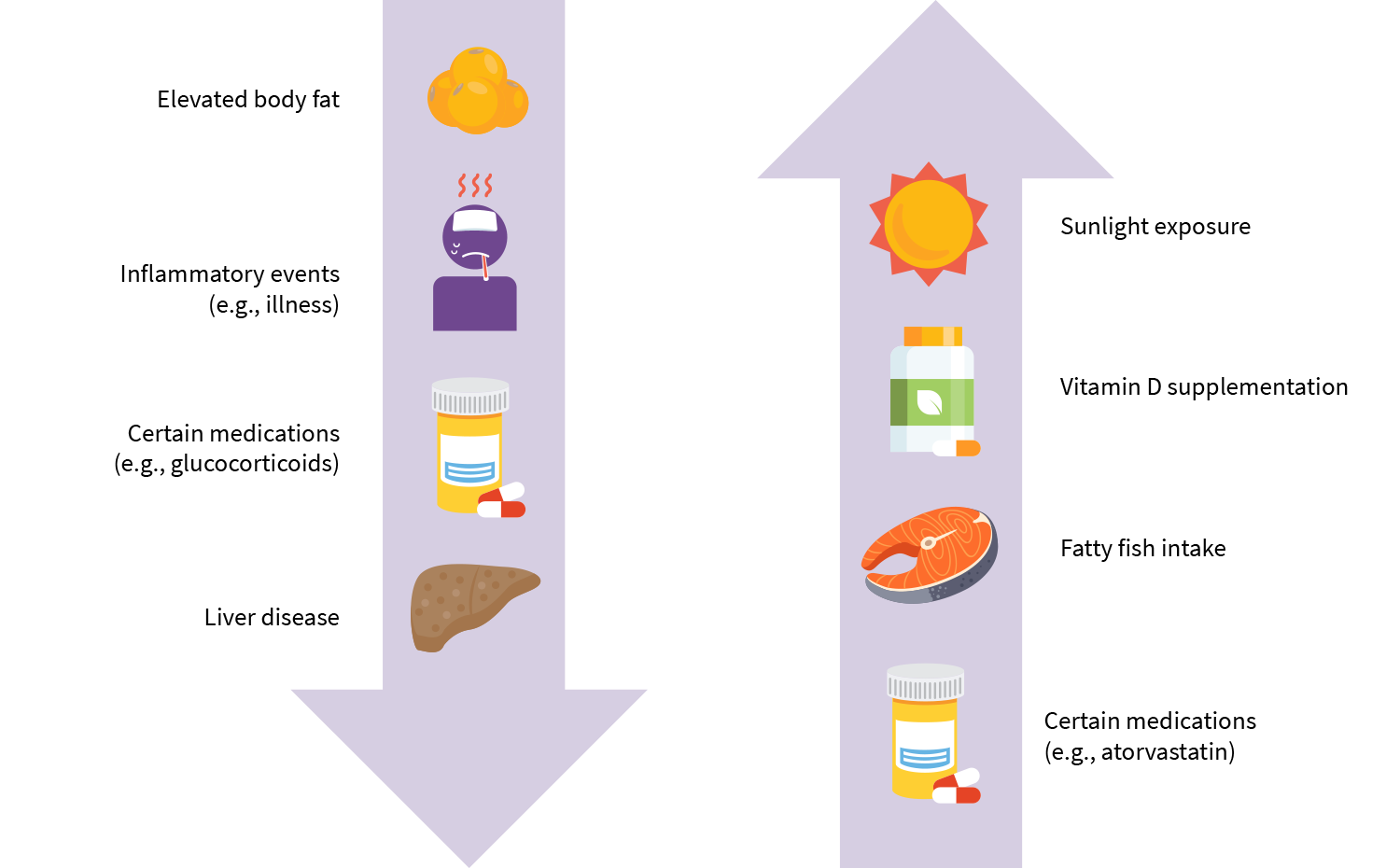There are many factors that can increase the risk of vitamin D deficiency, including the following:
-
Geographic location. Because UVB exposure from the sun initiates vitamin D synthesis in the body, your geographic location can affect the amount of vitamin D your body produces. People further away from the equator have less UVB exposure and therefore lower rates of vitamin D synthesis,[1] and weather patterns associated with more cloud cover and darkness can also reduce how much vitamin D is made through sun exposure.[2]
-
Breastfeeding. Breast milk does not usually contain enough vitamin D to meet the needs of infants. Because infants under 6 months should not be exposed to direct sunlight, exclusively breastfed infants have an increased risk of a deficiency.[3]
-
Medical conditions that limit the absorption of dietary fats.[4] Because it is a fat-soluble vitamin, the absorption of vitamin D is dependent on the ability of the gut to absorb fats from the diet.[5]
-
Dark skin pigmentation. A darker skin color reduces the absorption of UVB, which limits the production of vitamin D by the skin when it is exposed to the sun.[6]
-
Obesity. People with obesity tend to have lower vitamin D levels than people without obesity, which is thought to be caused by vitamin D being stored more in subcutaneous fat.[6]
-
Gastric bypass surgery. During gastric bypass surgery, parts of the gastrointestinal tract that absorb vitamin D are bypassed, which limits absorption and potentially causes a deficiency.[7][8]
-
Aging. The ability to make vitamin D in the skin during sun exposure decreases with age, by 13% per decade according to one study that compared vitamin D synthesis after younger and older adults were exposed to the sun one time.[9]
Factors that influence vitamin D levels




